One of the first writers I encountered on my return to poetry back in 2018, was Angela Readman. Angela’s work is incredible and requires a post of its own but one thing I remember from my early forays into her work is reading about a pamphlet she had physically made – each page written and stitched. This seemed a beautiful synergy of skill and began my fascination with how books are made in both the ethereal and physical sense. I’d like to tell you it’s something I’ve researched and learned about an that I’ve created some beautiful handmade zines and pamphlets over the years. I haven’t. What I have done though is to take a small step towards finding out more about making books by spending time at Matsuda Seihon, the workshop of Tsutomu Matsuda, a bookbinder of some 55 years experience who embodies the concept of Ikigai, which I wrote about in my last letter.
Learning to make books in Kyoto
My day begins with a bus journey out of Kyoto and away from the tourist zone. Kyoto is very safe and whilst there are normal concerns about getting lost, I had little of the anxiety that accompanies me on my journey at home. Predictably I took a few wrong turnings and got a bit confused, but I’d rehearsed this journey many times and realised my mistake quite quickly. The only way I can countenance this kind of journey is to be incredibly well prepared and to allow more than enough time so I don’t panic if things go wrong.
Google dings to indicate I’ve reached the right place - it looks like an ordinary house, but my extensive research means I’m expecting this (thank goodness!). Pretty hanging baskets mark the doorway, and Tsumoto’s daughter Yoko gives me a warm welcome. Shoes off, and into the studio – the scent is a mix of paper, glue and hot machinery – intoxicating and kind of reminds me of my dad. Tsumoto is at the press, and my class mates are already choosing which of the exquisite pieces of recycled kimono fabric to use as their cover.
This then is my first (and arguably most important ) task. Set before me is an array of old kimono fabric each one beautiful, each one calling to be used to create a book that will be treasure. I spot my choice almost instantly. Sky blue, decorated with warm toned flowers it reminds me of summer gardens. I hesitate to dive in, but it seems everyone has chosen, so I can make my choice without concern of seeming pushy.
The next task is to choose end papers and ribbons. I’m slightly obsessed with orange and turquoise at the moment and this combination will work well with the cover. Yoko approves with great enthusiasm, which makes me feel like I’ve won a little prize.
Choices made, we’re introduced to Tsumoto, who has an amazing smile and an air of patient skill. As well as leading these wonderful classes, Tsumoto is a respected lecturer and consultant at Seikaart University in Kyoto.
Tsumoto Matsuda making grooves in the paper to guide our sewing
I am suddenly quite nervous. I’m notoriously messy with glue and not the most precise stitcher. It’s obviously too late to back out and anyway I really want this book. We begin by stitching our pages together ( I use purple thread, which draws another smile from Yoko). This is a task that requires a surprising amount of strength as well as an ability to work to measurements. I do a good job and feel genuinely pleased. We progress through the process, gluing our endpapers and covers, applying cheesecloth to protect and strengthen the paper, apply more glue (eek) to secure ribbons and papers before the final stage of creating the grooves and using the press to secure a good finish.
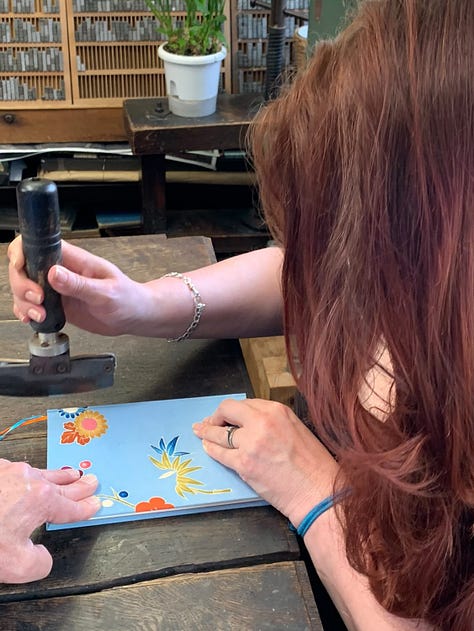
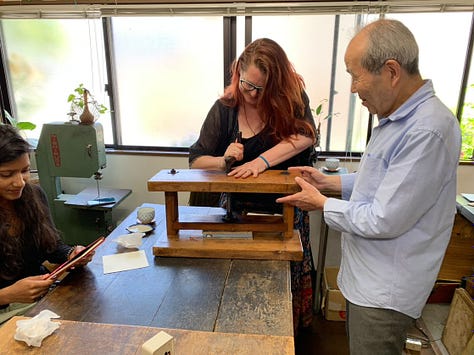
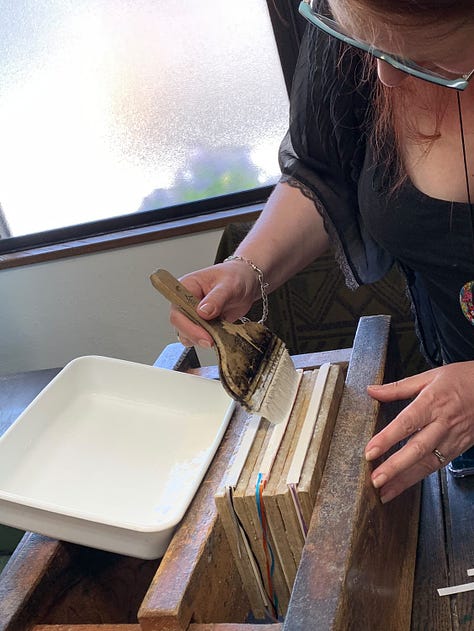
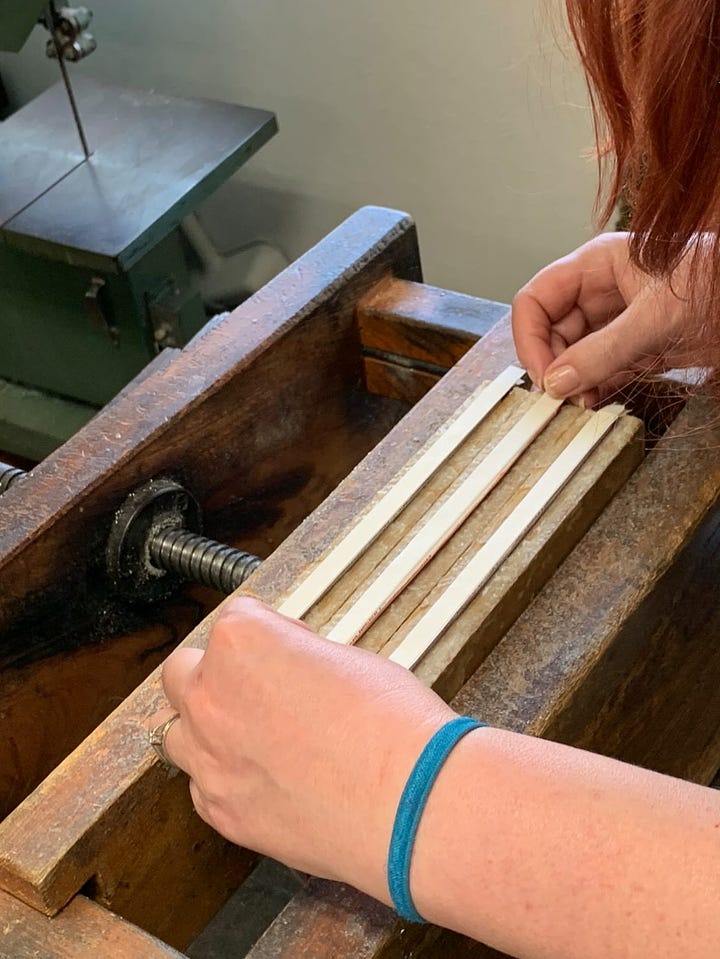
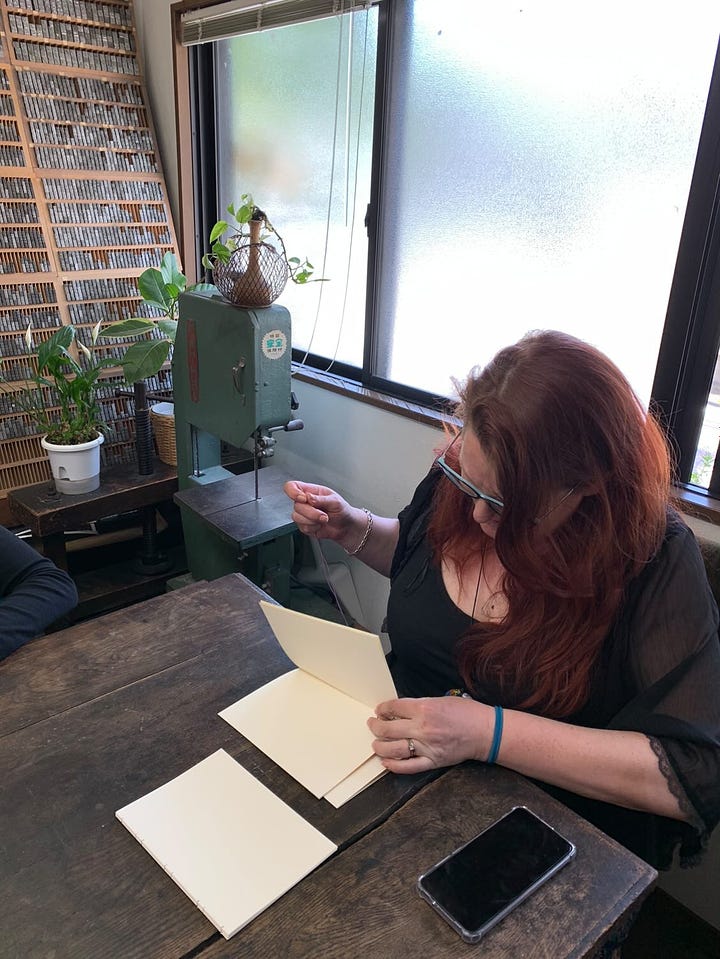
I feel shock and joy. I’ve done this thing that I’ve longed to do and done it well. We need to wait a little while for our books to cure. Yoko brings sweets and green tea, and we chat about where we’ve been in Kyoto, each of us agreeing this is the best thing we’ve done.
Our final stage is to emboss our book – I choose Kathryn Anna and Kyoto 23 for my message. Not terribly imaginative, but a good memento. I also choose blue foil and laugh with Tsumoto at me lack of strength for the press. And there it is. My very own book, made by me.
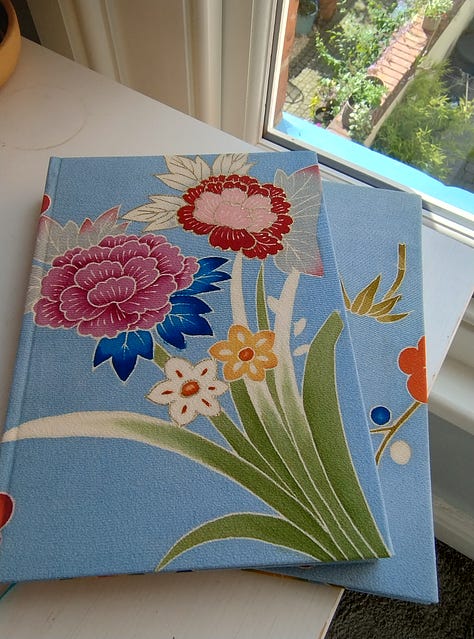
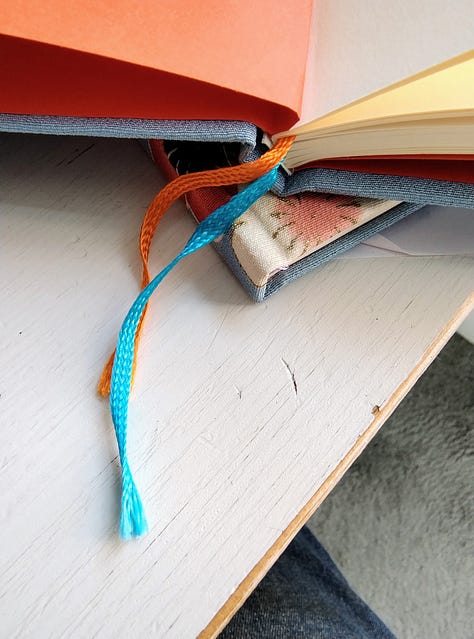
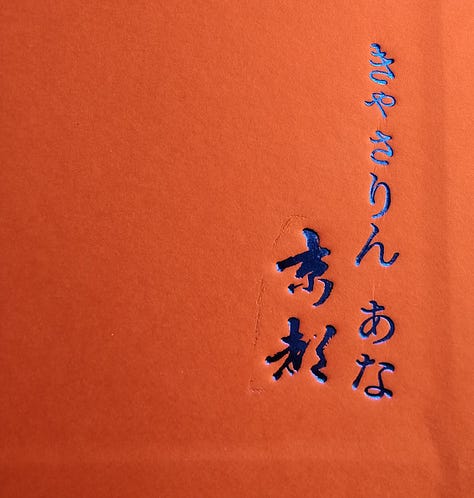
All too soon it’s time to take our leave. In true Japanese tradition we are each given a small gift – another beautiful notebook to cherish. Shoes back on, happy waves and arigatos, I pop back in to buy the sister of my book, so I have a beautiful pair. It’s still sunny when I leave and I feel so proud of myself. I rarely have the confidence to do things on my own and moments like this prove to me that I am capable. A lot of things have to line up to make it possible (being in better health, detailed planning and feeling safe are key) but the feeling of achievement it immense – and I have a beautiful book to remember to prove I did it.
I’m keen to expand my skills and create a homemade book. The twin barriers of time and confidence prevail but I shall but it on my goal list. Things are tricky at the moment with various changes to my health emerging so my time is even less my own but I’m hopeful I will get some answers, and a way forward, soon.
What would you like to read about next? I’m torn between looking at Shinrin Yoku known as forest bathing, or a straightforward round up about how to visit Japan without it costing a fortune (contrary to common belief it’s really easy to travel cheaply in Japan) known as forest bathing, which has again become popular in the west. I’m hopeful that discovering this it will be beneficial for us all! Let me know what you’d like to read about below.
If subscribing’s not for you at the moment, but you enjoy reading what I write (squee!) then a restack, clicking the ❤️ or leaving a comment is a fabulous way to show your support !




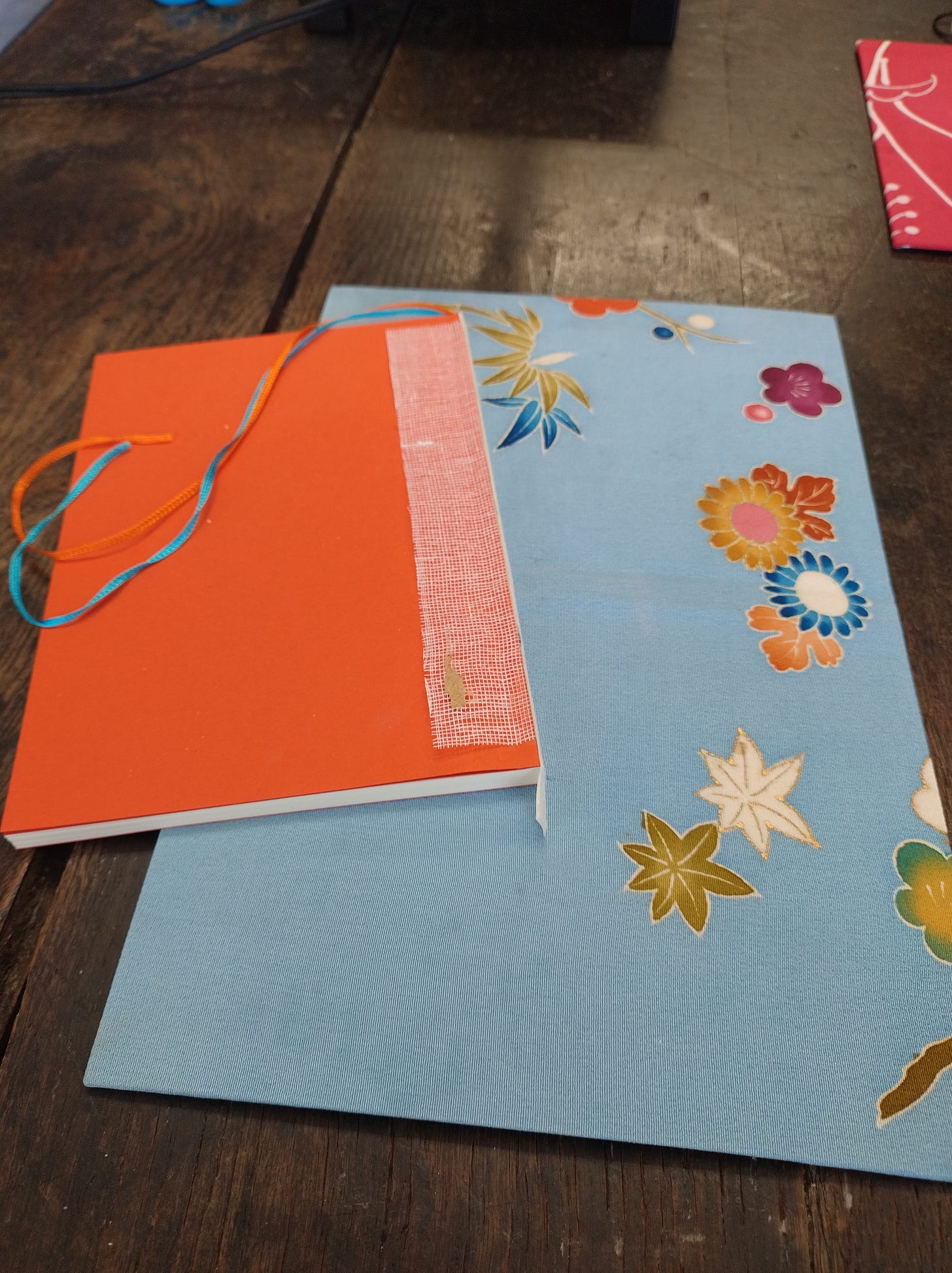
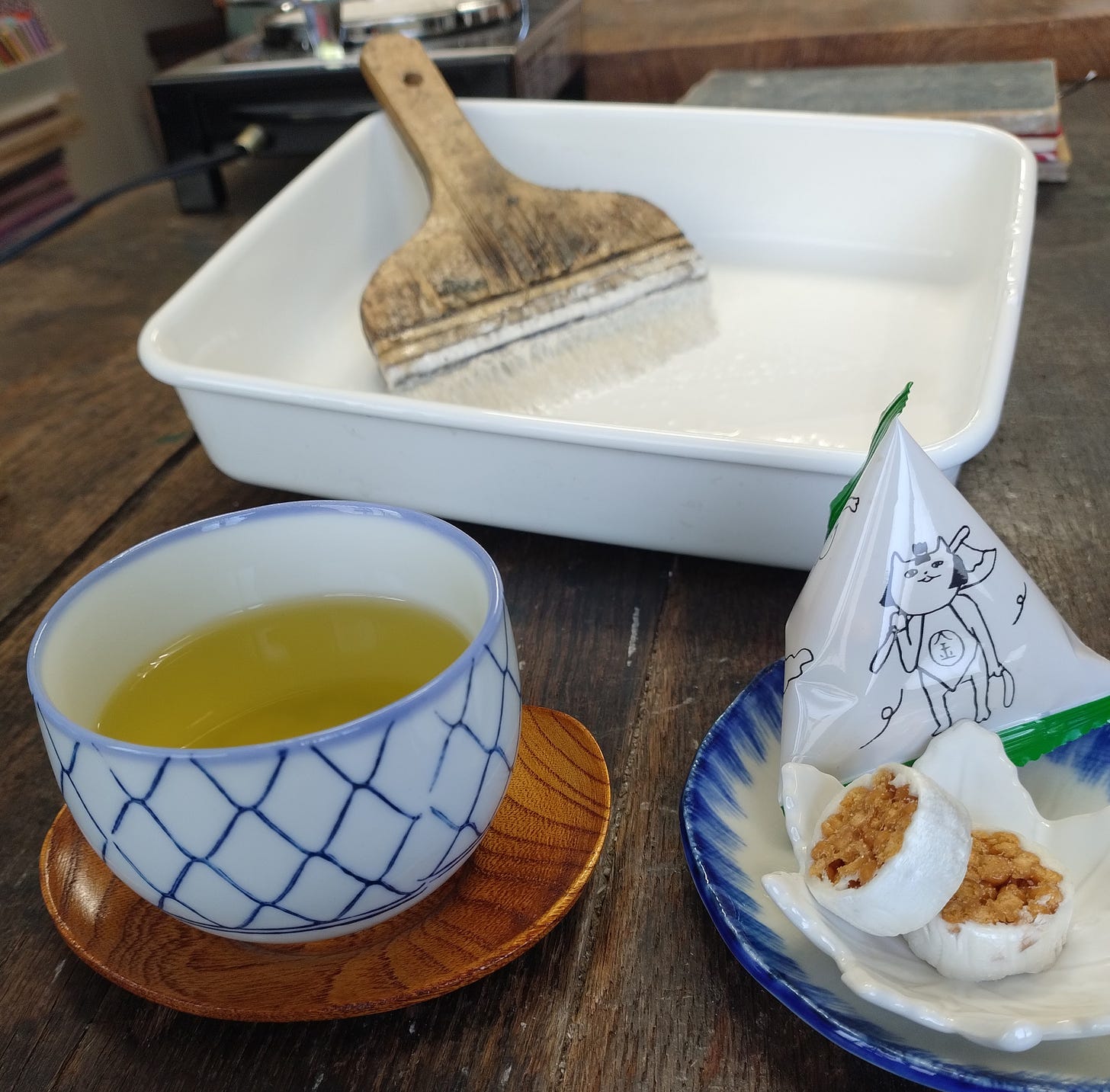
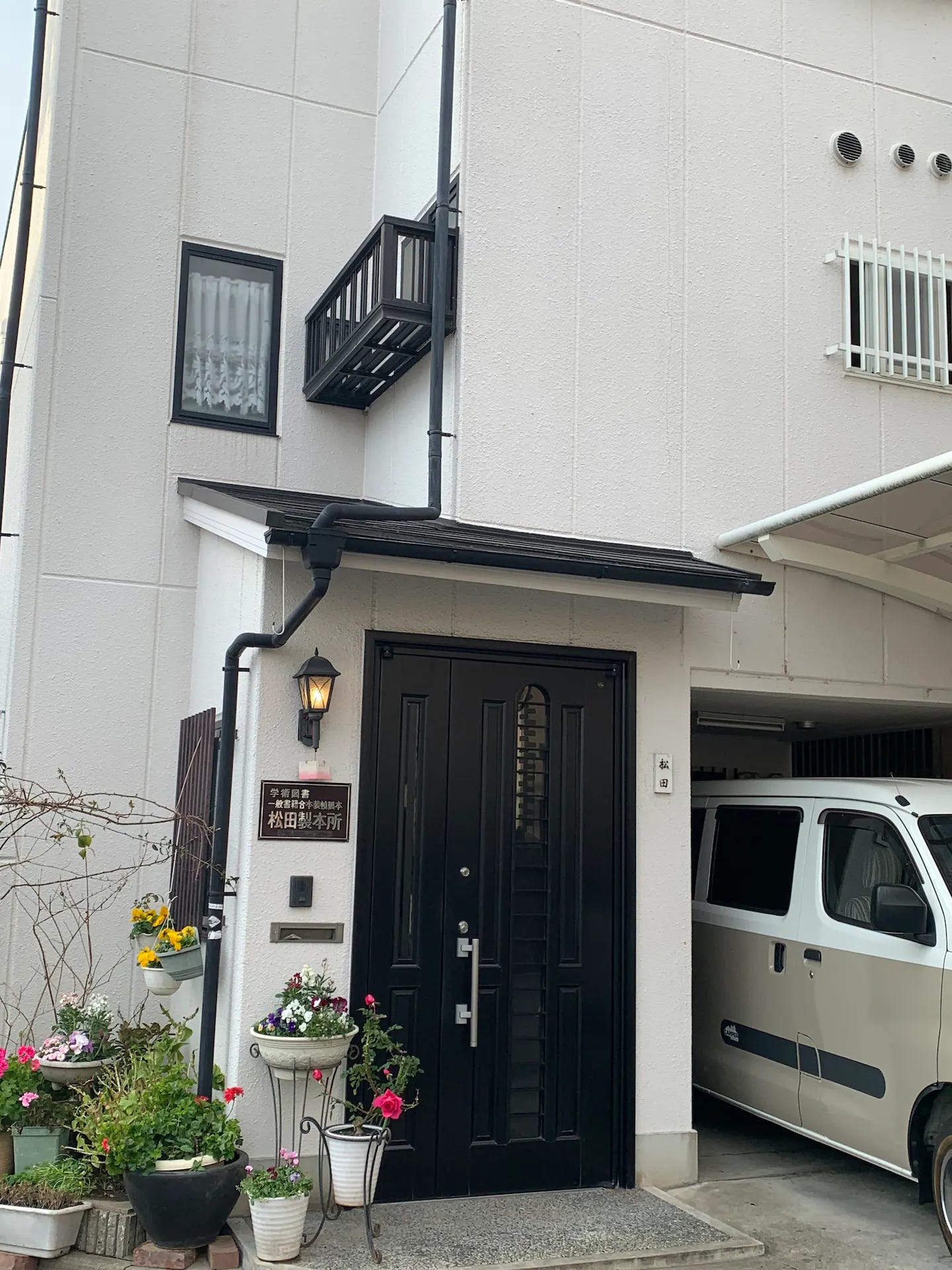
Oh the lure of making books ! One course about 15 years ago was enough to entirely hook me .. and I’m still making them and exploring their possibilities now. I absolutely recognised that joy in making you’ve expressed beautifully !
That sounds delightful! I’d love to make my own book.
For the next topic, hmm, I’d like both of those please 😂 forest bathing and travelling cheap in Japan!